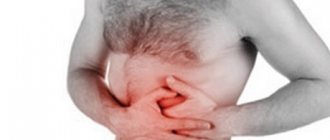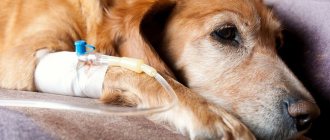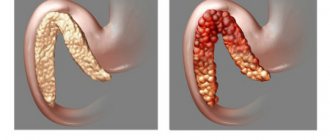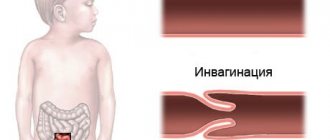Almost no acute respiratory disease in childhood occurs without inflammation of the mucous tissues of the pharynx. The condition is accompanied by severe discomfort, pain, soreness and difficulty swallowing, and often the baby’s voice becomes hoarse and deaf. To effectively treat a throat in children, including at home, parents need to know the mechanism of development of the pathology and methods that can help the child without harm to his health.
Medical specialists today will tell you how to properly help children with a sore throat, when you need to quickly seek treatment from doctors, and will help you understand other important issues.
general information
The pharynx, which experts divide into three parts (nasopharynx, oropharynx and laryngopharynx), is the front line of local immunity. It is she who is the first to encounter external blows from pathogens: viruses, bacteria, allergens, fungi. The mucous membranes of the pharynx contain many nerve endings, which is why any, even minor, inflammatory process leads to the appearance of a variety of unpleasant symptoms.
If the inflammation has gone further and affected neighboring organs, then in such situations, in addition to complaints of sore throat and sore throat, the baby experiences fever, lethargy, cough, runny nose or other manifestations of a respiratory infection. At the same time, a “red throat,” which many mothers have repeatedly heard about from an observing pediatrician, may mean nothing and not require treatment at all, especially if the child himself has no complaints, and the redness worries only the parents.
Important: a sore, red throat in a child is not a diagnosis, but only a symptom of a specific infection that must be determined before starting treatment. Doctors should diagnose and prescribe appropriate therapy.
Differential diagnosis and treatment tactics for acute tonsillitis (tonsillitis) at the present stage
Acute tonsillitis (AT), or tonsillitis, is an acute infectious disease of one or more components of the lymphadenoid pharyngeal ring with primary damage to the parenchyma, lacunar and follicular apparatus of the tonsils. Sore throat can be an independent nosological form, as well as a complication or one of the manifestations of infectious and somatic diseases [1].
The following forms of OT (angina) are distinguished [2]:
- by etiology: streptococcal, staphylococcal, pneumococcal, etc.;
- by localization of the pathological process: palatine tonsils, lateral pharyngeal ridges, nasopharyngeal tonsil, lingual tonsil, lymphoid formations of the posterior pharyngeal wall, lymphoid formations of the larynx;
- according to the nature of the local process: catarrhal, follicular, lacunar, membranous-necrotic;
- by severity: mild, moderate, severe;
- by disease frequency: primary, recurrent;
- along the course: smooth, non-smooth (with complications, with a layer of secondary infection, with exacerbation of chronic diseases).
Catarrhal tonsillitis is an inflammation of the mucous membrane of the tonsils without the formation of plaque on them.
Follicular tonsillitis is a purulent melting of the follicles of the tonsils, while against the background of hyperemic and hypertrophied tonsils, multiple whitish-yellowish, vaguely demarcated, “millet grain”-sized points are observed, which shine through the epithelial cover in the form of rounded yellowish islands 3-4 mm in size. The surface of the tonsils takes on, in Simanovsky’s figurative expression, the appearance of a “starry sky.”
Lacunar tonsillitis - manifested by enlargement and hyperemia of the tonsils, with a purulent coating emanating from the lacunae and spreading over the surface of the tonsils - it consists of detritus, pus - yellow, white-yellow in color, loose consistency, easily removed, rubbed with a spatula, not beyond the tonsils spreads, the surface of the tonsils does not bleed after its removal, and plaque does not renew after removal.
With membranous-necrotic tonsillitis, there is a sharp pain when swallowing, dirty-gray areas of necrotic tissue of the tonsils up to 10-20 mm in size, and slight swelling of the tonsils. When plaque is rejected, a bleeding defect in the tonsil tissue with an uneven surface is formed.
A mild form of OT is manifested by low-grade fever for no more than 2–3 days, slight pain in the throat when swallowing, moderate general weakness, exudative or follicular tonsillitis, an increase of up to 1 cm in the diameter of the submandibular lymph nodes, and their moderate pain.
The moderate form of OT is accompanied by fever of 38.5–39.0 °C for 4–6 days, severe intoxication (weakness, chills, headache, muscle and joint pain, sleep disturbance), severe tonsillitis (pain in the throat when swallowing, a large number of purulent follicles on the tonsils), enlargement of regional lymph nodes up to 2 cm, their severe soreness.
A severe form of OT is characterized by fever above 39.0 °C, severe intoxication, constant sore throat, severe hyperemia of the tonsils spreading to the soft palate, a large amount of pus in the lacunae, regional lymph nodes are enlarged to 3 cm, painful, there may be signs of kidney damage.
Repeated OT is a disease that occurs annually or no later than two years after the previous one, and is characterized by the more frequent formation of tonsillogenic pathology.
OT most often affects children of school age and adolescence. In early childhood (up to 3 years) and over the age of 50 years, the incidence of OT is lower. This is due to age-related imperfections of the lymphoid tissue of the pharynx in children and its age-related involution after 50 years [1].
The main causative agent of sore throat is considered to be group A β-hemolytic streptococcus (GABHS). The incubation period for acute streptococcal tonsillitis ranges from several hours to 2–4 days. Characterized by an acute onset of the disease with an increase in body temperature to 37.5–39 °C, chills, headache, general malaise, sore throat, aggravated by swallowing, arthralgia and myalgia are not uncommon. Children may have nausea, vomiting, and abdominal pain. A detailed clinical picture is observed, as a rule, on the second day from the onset of the disease, when the general symptoms reach their maximum severity. On examination, redness of the palatine arches, uvula and posterior wall of the pharynx is revealed. The tonsils are hyperemic, swollen, often with a yellowish-white purulent coating. The plaque is loose, porous, and can be easily removed with a spatula from the surface of the tonsils, without the formation of a bleeding defect. All patients experience thickening, enlargement and tenderness of the cervical lymph nodes at the level of the angle of the lower jaw. The hemogram is characterized by leukocytosis of 9–12 × 109/l, with a shift in the leukocyte formula to the left, an increase in ESR, sometimes up to 40–50 mm/h, and an increase in the level of C-reactive protein in the blood.
The relevance of streptococcal sore throat is due not only to its wide distribution, but also to the large number of complications. More than 80 complications are known, including: acute rheumatic fever (ARF), post-streptococcal glomerulonephritis, polyarthritis, systemic vasculitis, infectious-allergic myocarditis, otitis media, peritonsillar abscess, etc. [3–5].
However, OT can be of another bacterial etiology (diphtheria, tularemia, syphilitic, tuberculosis) and candidiasis. Various viruses can also cause OT - herpes simplex virus, Eptstein-Barr virus, cytomegalovirus, adenoviruses and enteroviruses.
With age, the etiology of OT undergoes significant changes. According to L.G. Aistova et al. (2012), in children aged 3 months to 3 years, in 44% of cases, OT is caused by multiple mixed herpetic infection, in 31% of cases - by opportunistic microflora (Neisseria perflava), in 35% - by streptococci of different groups (A, F, D). In children aged 3 to 7 years, on the contrary, herpes viruses were detected only in 9% of cases, and in 77% of cases, sore throat was caused by bacterial flora and was not complicated by herpetic infection; streptococci of groups A, F, D were diagnosed in 28% [6 ].
Similar results were obtained by A. Yu. Medvedev et al. (2011). During OT, streptococci of different types were isolated: Streptococcus pneumoniae - in 52%, Streptococcus pyogenes - in 18%, Streptococcus agalactiae - in 2% of patients, staphylococci (Staphylococcus aureus, etc.) - in 18%. In 10% of patients, gram-negative and gram-positive opportunistic bacteria were noted as independent pathogens of OT, and herpes viruses were found in 18% [7].
Due to the wide variety of etiologies of OT, infectious disease specialists and pediatricians face an important task - competent diagnosis and timely prescription of adequate therapy. In modern Russia, 95% of OT patients receive antibiotics, including often doctors at clinics prescribing ineffective drugs: ampicillin (45%), erythromycin (19%), ciprofloxacin (7%), doxycycline (6%), etc. [5]. Not every OT needs to prescribe antibiotics, but they are required for streptococcal sore throat. With the latter, the main goal of antibacterial therapy (ABT) is the eradication of group A streptococcus, since only in this case the risk of developing a complication such as ARF is eliminated.
Unjustified use of antibiotics leads to the development of microbial resistance to them, the development of complications (anaphylactic reactions, intestinal imbalance, the development of fungal complications), and increases the cost of therapy.
To diagnose OT caused by GABHS [2, 8], the following are used:
- clinical differential diagnosis;
- clinical scale method;
- method of cultural studies (microbiological diagnostics);
- express diagnostic method (rapid tests).
However, none of these methods are 100% effective and each has disadvantages.
Considering that no clinical symptom can be absolute proof in identifying streptococcal tonsillitis and the diagnostic significance of various symptoms is not the same, a progressive step was the formalization of symptoms and their reduction into clinical scales. From them, the doctor will know the likelihood of isolating GABHS during a cultural examination of a smear from the oropharynx. The following scales have been developed: Breeze scale (1975), Walsh scale (1977), Sentor scale (1981), MacIsaac scale (1998). The higher the total score for them, the higher the likelihood of isolating GABHS. The predictive power of clinical scales is not high enough (with a maximum MacIsaac score of 51–53%), and therefore, even if the patient has a maximum score, streptococcal tonsillitis cannot be diagnosed with confidence. However, the scales allow us to identify a group of patients with a low risk of streptococcal sore throat. If the Sentor or MacIsaac clinical scale is used, then with a score of 1 point or less, the risk of GABHS isolation does not exceed 10% [8, 9].
The MacIsaac scale for a patient with OT provides [9]:
- body temperature above 38 °C - 1 point;
- absence of cough - 1 point;
- enlargement and tenderness of cervical lymph nodes - 1 point;
- swelling of the tonsils and the presence of exudate - 1 point;
- age from 3 to 14 years - 1 point;
- age from 15 to 44 years - 0 points;
- age over 45 years - 1 point.
Medical tactics for a patient with OT depends on the number of points on the MacIsaac scale and is presented in table. 1.
The gold standard for examining a patient with complaints of sore throat is a bacteriological examination of an oropharyngeal smear [10–12]. The smear collection technique has a significant impact on the sensitivity of the method. A smear is taken using a swab from the surface of the tonsils, from the mouths of the tonsil crypts and from the back wall of the pharynx. You should not touch the swab to other areas of the mucous membrane before and after collecting the material. The swab should not be taken soon after eating. The material cannot be representative if taken after the start of ABT. The sensitivity of the culture method is 90%, specificity 95–99%. The disadvantage of this method is that the answer is received only 1–2 days after collecting the material, as well as the need for a bacteriological laboratory [12]. The desire to avoid these shortcomings led to the development of rapid tests that can detect GABHS directly in an oropharyngeal smear [11, 12]. Comparative characteristics of these tests are given in table. 2.
The sensitivity of the first and second generation tests is not a fixed value and depends on the number of microorganisms in the material and the severity of the clinical picture. The lower the clinical scale score and the lower the amount of GABHS, the less sensitive the system is [12].
Rapid tests complement, but do not replace the cultural method, since a negative rapid diagnostic result does not exclude streptococcal etiology of the disease [13]. In addition, only by isolating the pathogen can its sensitivity to antibiotics be determined, which is an important aspect in working to reduce antibiotic resistance [14]. Rapid testing involves obtaining results “at the patient’s bedside” within 4–10 minutes. The analysis is performed by a physician and does not require a special laboratory, and the sensitivity and specificity of modern second-generation tests, exceeding 90%, make it possible to avoid duplicate bacteriological testing if the rapid test result is negative [15].
K. V. Shpynev et al. (2007) proposed the following algorithm for diagnosis and treatment tactics for OT [3] (Fig.).
Therapy for any etiology includes bed rest for the first 3–4 days of illness, a diet with a predominance of dairy and plant-based foods rich in vitamins, and drinking plenty of fluids. All patients with OT are prescribed pathogenetic and symptomatic therapy with non-steroidal anti-inflammatory drugs (NSAIDs) and antihistamines.
Fever below 38°C in initially healthy children and adults generally does not require treatment. However, with streptococcal sore throat, fever is often combined with manifestations of intoxication, which significantly worsens the well-being of patients.
Antipyretic therapy for OT is indicated [16]:
- previously healthy: - at t > 39 °C; - for muscle aches; - for headaches.
- with a history of convulsions at t > 38 °C.
- for severe chronic diseases (t > 38 °C).
- in the first 3 months of life (t > 38 °C).
Prescribing acetylsalicylic acid (Aspirin) for this purpose to children and adolescents has been prohibited in the United States since the 70s, and in Russia since the late 1990s, due to the proven connection of their use with the development of Reye's syndrome. Analgin is not used as an over-the-counter antipyretic, which is associated with the risk of developing agranulocytosis and collapse with hypothermia; this drug is prescribed only as an analgesic or to quickly reduce temperature for special indications as part of a lytic mixture: IM Analgin 50% solution 0.1–0.2 ml/10 kg + Papaverine 0.1–0.2 ml 2% solution . Paracetamol is a frequently used antipyretic and mild analgesic in children, a derivative of phenacetin, but much less toxic than the latter. Contraindicated for liver diseases. Ibuprofen (Nurofen for children, Nurofen) - a derivative of propionic acid - has antipyretic, analgesic and anti-inflammatory properties. Currently used in more than 30 countries [16].
The safety of Nurofen for children is due to:
- short half-life (1.8–2 hours);
- during metabolism in the liver, pharmacologically active substances are not formed, so there is no direct toxic effect on parenchymal organs (liver, kidneys, etc.);
- excretion of drug metabolites in urine is completed 24 hours after taking the last dose. The rapid metabolism and excretion of ibuprofen to some extent explain its relatively low toxicity compared to other NSAIDs and the lack of negative effects on renal function. With long-term use, its accumulation in the body does not occur.
If there is a history of allergic diseases and concomitant pathology of the digestive organs, it is rational to use paracetamol or Nurofen in suppositories due to the absence of flavoring additives in the rectal form and a direct effect on the gastric mucosa [16].
Local treatment includes gargling with solutions containing antiseptic or anti-inflammatory agents to mechanically remove debris from the tonsils. It is of leading importance compared to irrigating the throat with aerosols. The most effective aerosol today is Miramistin. Symptomatic and local therapy for acute tonsillitis shortens the course of the disease by one day, which does not mean that it should be neglected.
Drugs recommended for local treatment of OT:
- chlorophyllipt - 1 tsp must be dissolved in 100 ml of water;
- tea tree essential oil - essential oils do not dissolve in water, so 4-5 drops of oil must first be dropped into a teaspoon of salt or soda, and then stirred in warm water (1 glass);
- Miramistin 3-4 times pressing 3-4 times a day. The amount of the drug per irrigation is 10–15 ml.
Rinse solutions should be as fresh and warm as possible. Rinsing should be done at least 3 times a day, especially after meals. After the procedure, you should not eat or drink for 20–30 minutes. One rinse should last at least 30 seconds.
Systemic ABT is aimed at eradicating the main causative agent of angina - GABHS [17]. When choosing ABT, it should be taken into account that GABHS are highly sensitive to penicillins and cephalosporins. The route of administration for systemic ABT should provide the necessary concentration of the drug at the site of infection, be simple and not burdensome for the child. For outpatients, antibiotics are usually prescribed orally, except in cases where one intramuscular injection is sufficient. In the hospital, the antibiotic is often administered intramuscularly (in the absence of blood clotting disorders), and in severe forms and the possibility of venous catheterization - intravenously. Parenteral administration of antibiotics should be used at the beginning of treatment, and when the patient’s condition improves, it is advisable to switch to taking the drug orally. In pediatrics, this provision is especially important for reducing negative reactions on the part of the child.
The first-line drugs in the treatment of infectious processes caused by streptococcus pyogenes, both in Russia and abroad, are semi-synthetic penicillins [8, 18, 19]. Beta-lactams remain the only class of antibiotics to which GABHS has not developed resistance [4, 8]. At the same time, resistance to tetracyclines and sulfonamides in Russia exceeds 60%. In addition, tetracyclines, sulfonamides, co-trimoxazole do not provide eradication of GABHS, and therefore they should not be used for the treatment of acute streptococcal tonsillitis caused even by strains sensitive to them in vitro [18]. Macrolide antibiotics, due to the rapid increase in streptococcal resistance to them, are third-line drugs for the treatment of acute tonsillitis [20].
To eradicate GABHS, a 10-day course of ABT is required (the exception is azithromycin, which is used for 5 days). Early administration of antibiotics significantly reduces the duration and severity of symptoms of the disease. Repeated microbiological examination at the end of ABT is indicated for children with a history of rheumatic fever, in the presence of streptococcal tonsillitis in organized groups, as well as in cases of high incidence of rheumatic fever in a particular region [14].
The choice of drug for ABT of streptococcal OT is reflected in table. 3.
The clinical effect of penicillins is assessed at the turn of 48-72 hours of therapy, macrolides (azalides) - 48-56 hours.
A review of the initial ABT is carried out when:
- absence of clinical signs of improvement within 48–72 hours (depending on the type of antibiotic) from the start of therapy;
- at an earlier time as the severity of the disease increases;
- with the development of severe adverse reactions;
- when clarifying the causative agent of infection and its sensitivity to antibiotics based on the results of a microbiological study.
If natural penicillins are ineffective and with recurrent streptococcal tonsillitis, other antibacterial drugs are prescribed orally for 10 days: amoxicillin/clavunate, cefuroxime axetil, clindamycin, lincomycin [14, 17, 18].
Errors in the treatment of streptococcal tonsillitis include [14, 18]:
- incorrect differential diagnosis of streptococcal, viral and tonsillitis of other etiologies;
- neglect of the combination of analytical methods (clinical, scale method, microbiological studies);
- unreasonable preference for local treatment (rinsing, etc.) to the detriment of systemic ABT;
- underestimation of the clinical and microbiological effectiveness and safety of penicillins;
- prescription of sulfonamides, co-trimoxazole, tetracycline, fusidine, aminoglycosides;
- reduction of the ABT course with clinical improvement.
Acute tonsillitis of another etiology may have similar symptoms. Differential diagnosis of tonsillitis is carried out during pharyngoscopy based on the predominance of certain changes in the tonsils, as well as taking into account other changes in the pharynx and general manifestations of the disease, including symptoms characteristic of certain infectious diseases.
The most dangerous disease accompanied by OT is diphtheria. Diphtheria can occur in localized and toxic forms. The localized form of oropharyngeal diphtheria is characterized by an acute or subacute onset, chilling, increased body temperature up to 38 °C, headache, weakness - signs of moderate intoxication. A sore throat may not appear immediately; it is not very severe. Plaque on the tonsils forms already in the first hours, and by the end of the first day (beginning of the second day) a dense film with a smooth surface of a grayish-white, pearlescent color is formed. Around the plaque there is a faint hyperemia of the mucous membrane with a cyanotic tint. In the early stages, the film can be removed without damaging the mucous membrane. Subsequently, the plaque becomes denser, thickens, and when you try to remove it, the mucous membrane bleeds. In areas where plaque has been removed, it forms again. The plaque rises above the surface of the tonsils, its edge is clearly demarcated from healthy tissue. Swelling of the tonsils corresponds to the intensity of plaque formation. The reaction of the lymph nodes is moderate. The period of elevated body temperature with localized diphtheria lasts 3 days. With normalization of temperature, sore throat decreases, but plaque on the tonsils persists for 6–7 days [21].
Toxic diphtheria of the oropharynx begins acutely, with chills, headache, nausea, and severe sore throat. Body temperature rises to 39–40 °C. Fibrinous deposits in toxic diphtheria are detected in the first hours of the disease. From the second day they become denser and spread beyond the tonsils. An early sign of toxic diphtheria is swelling of the mucous membrane of the oropharynx, which spreads from the tonsils to the soft palate, arches, and uvula. The relief of the tonsils is smoothed out, and they merge with the tissue of the arches, closing with the internal surfaces. The swelling does not have clear boundaries, grows quickly, the tonsils acquire a purplish-bluish tint; hyperemia can be bright. There is severe pain when swallowing, difficulty in eating any food, pain in the neck, and a sweetish-sweet odor emanates from the mouth. From the first day of illness, there is a significant increase in lymph nodes; they are dense and painful [21].
Swelling of the subcutaneous tissue of the neck is detected from the second day of illness. It has a doughy consistency, painless, and spreads from the regional lymph nodes to the neck. The spread of edema of the tissue serves as a criterion for assessing the severity of toxic diphtheria of the oropharynx: if the edema is localized only above the regional lymph nodes, they speak of a subtoxic form, if the lower border reaches the 1st cervical fold - of the toxic form of the 1st degree, up to the clavicles - 2nd degree, below the clavicles — III.
Simanovsky–Plaut–Vincent angina accounts for 5–8% of all angina. It is caused by the association of two microorganisms: Borrelii vincenti and the fusiform bacillus - Fusobacterii fusiforme hoffman, and is characterized by the absence of severe intoxication. Body temperature does not rise above subfebrile values. Sore throat is mild. The process is often one-sided, manifested by a grayish coating followed by the formation of a crater-shaped ulcer and a putrid odor from the mouth.
Candidomycosis is also practically not accompanied by general symptoms; it often develops against the background of HIV infection or other immunodeficiencies. The plaque resembles a cheesy mass; after removing the plaque, the mucous membrane does not bleed. Plaques can merge and spread to the soft palate and the back of the pharynx. Cervical lymphadenitis is not typical [1].
Herpangina is more common in children under 15 years of age. The causative agent is considered to be Coxsackievirus type A. This form of tonsillitis is accompanied by severe symptoms of intoxication and high fever. Vesicles with serous contents are visible on the anterior palatine arches; the palatine tonsils themselves may be only slightly hyperemic, but in some cases they are covered with small white blisters or ulcerations [1].
Infectious mononucleosis caused by the Epstein-Barr virus is characterized by severe malaise, fever up to 38–39 °C, sore throat, hepatosplenomegaly, enlargement of the superficial and deep lymph nodes of the neck, snoring, nasal congestion, and later a reaction appears in other groups of lymph nodes. The timing of the appearance of tonsillitis lags behind other signs of infectious mononucleosis. Plaques on the tonsils are white or white-yellow in color and are difficult to separate. In the hemogram, the initial leukopenia is replaced by pronounced leukocytosis (up to 20–30 × 109/l); in the leukocyte formula, up to 80–90% are lymphocytes, monocytes and atypical mononuclear cells. In infectious mononucleosis, drugs from the aminopenicillin group (ampicillin, amoxicillin (Flemoxin Solutab), amoxicillin with clavulanate (Amoxiclav, Moxiclav, Augmentin)) are contraindicated due to the possibility of developing an allergic reaction in the form of exanthema 5–7 days after the start of administration.
Peritonsillar abscess is a complication of chronic tonsillitis and develops following its exacerbation. It is characterized by high fever and severe intoxication. The sore throat is sharp, increasing in intensity as the disease progresses. Due to pain, the patient cannot swallow food, water, or saliva. Characterized by a forced position of the head with a tilt to the side, trismus of the masticatory muscles (during the formation of an abscess). Hyperemia of the pharynx is bright, there may be plaques that can be easily removed and rubbed. There is no correspondence between the prevalence of plaque and edema - an increase in edema is not accompanied by the transfer of plaque from the tonsils to the soft palate; there may be no plaque at all. Swelling and infiltration are one-sided, pronounced, and there is an overhang of the pharynx vault. Hypersalivation is characteristic.
Medical tactics for tonsillitis caused by these etiological agents include timely referral of the patient to an infectious diseases hospital for laboratory examination and treatment in accordance with the etiology of the disease.
Literature
- Kochetkov P. A., Lopatin A. S. Sore throat and acute pharyngitis // Atmosphere. Pulmonology. Allergology. 2005; 3:8–14.
- Clinical recommendations (treatment protocol) for providing medical care to children with tonsillitis (acute streptococcal tonsillitis). FSBI NIIDI FMBA of Russia, 2015. 29 p.
- Sipyagina M.K., Zorkina A.V. Dynamics of some echocardiographic indicators in recurrent tonsillitis // Bulletin of RUDN University. 2010; 1:88–91.
- Walker MJ, Barnett TC, McArthur JD, Cole JN, Gillen CM, Henningham A., Sriprakash KS, Sanderson-Smith ML, Nizet V. Disease manifestations and pathogenic mechanisms of Group A Streptococcus // Clin Microbiol Rev. 2014; 27(2):264–301.
- Anjos LM, Marcondes MB, Lima MF, Mondelli AL, Okoshi MP Streptococcal acute pharyngitis // Rev Soc Bras Med Trop. 2014; 47(4):409–413.
- Aistova L.G., Silchuk N.V., Polovitsa N.V. Mixed herpetic infection in sore throats in children // Far Eastern Journal of Infectious Pathology. 2012; 21: 60–62.
- Medvedev A. Yu., Valishin D. A. Etiological features of tonsillitis in patients infected with the Epstein-Barr virus // Medical Bulletin of Bashkortostan. 2011; 3:88–90.
- Regoli M., Chiappini E., Bonsignori F., Galli L., de Martino M. Update on the management of acute pharyngitis in children // Ital J Pediatr. 2011; 37:10.
- Mclsaac W.J., Goel V., To T. et al. The validity of sore throat score in family practice // CMAJ. 2000; 163(7):811815.
- Gerber MA, Baltimore RS, Eaton CB, Gewitz M., Rowley AH, Shulman ST, Taubert KA Prevention of rheumatic fever and diagnosis and treatment of acute Streptococcal pharyngitis: a scientific statement from the American Heart Association endorsed by the American Academy of Pediatrics Circulation . 2009, 119: 1541–1551.
- Choby BA Diagnosis and treatment of streptococcal pharyngitis // Am Fam Physician. 2009; 79(5):383–390.
- Sokolov N. S., Otvagin I. V. Approaches to the etiological diagnosis of acute tonsilopharyngitis in the practice of an otolaryngologist // Bulletin of the Smolensk State Medical Academy. 2016; 15 (3): 57–61.
- American Academy of Pediatrics, Committee on Infectious Diseases: Red Book: Report of the Committee on Infectious Diseases. Elk. Grove Village, 2006. 27 p.
- Nanosova V. A., Belov B. S., Strachunsky L. S. et al. Antibacterial therapy of streptococcal tonsillitis and pharyngitis // Clinical microbiology and antimicrobial chemotherapy. 1999; 1: 78–82.
- Tonsillopharyngitis / Ed. Ryazantseva S.V. St. Petersburg: Polyforum. Flu. 2014. 40 p.
- Krasnova E.I. Acute streptococcal infection. Clinical, diagnostic, treatment and prophylactic aspects. Novosibirsk 2015. 160 p.
- Kryuchko T. A., Tkachenko O. Ya., Specht T. V. The problem of tonsillitis in pediatric practice // Modern Pediatrics. 2012; 2 (42): 41–46.
- Handbook of antimicrobial therapy. Issue 2 / Ed. R. S. Kozlova, A. V. Dekhnicha. Smolensk: MAKMAH, 2010. 416 p.
- Brook I. Treatment challenges of group A beta-hemolytic Streptococcal pharyngo-tonsillitis // Int Arch Otorhinolaryngol. 2017; 21(3):286–296.
- Tulupov D. A., Karpova E. P. Antibacterial therapy of acute infections of the upper respiratory tract in children // Medical Council. 2018; 11:58–63.
- Bacterial diseases: textbook / Ed. N. D. Yushchuk. M.: GEOTAR-Media, 2014. 976 p.
E. I. Krasnova1, Doctor of Medical Sciences, Professor N. I. Khokhlova, Candidate of Medical Sciences V. V. Provorova, Candidate of Medical Sciences A. N. Evstropov, Doctor of Medical Sciences, Professor
Federal State Budgetary Educational Institution of Higher Education NSMU Ministry of Health of the Russian Federation, Novosibirsk
1 Contact information: [email protected] ru
Differential diagnosis and therapeutic tactics for acute tonsillitis (tonsillitis) at the present stage / E. I. Krasnova, N. I. Khokhlova, V. P. Provorova, A. N. Evstropov For citation: Attending physician No. 11/2018; Page numbers in issue: 58-63 Tags: infections, differential diagnosis, β-hemolytic streptococcus
Possible causes of sore throat in children
The most common culprit of illness in childhood is acute viral respiratory infections or ARVI. The most common among them are:
- flu;
- adenoviral infection;
- coronavirus infection;
- herpetic infection;
- Infectious mononucleosis.
There are a lot of potentially dangerous pathogens that can provoke:
- pharyngitis - an inflammatory process affecting the tonsils of the pharynx;
- laryngitis – inflammation of the mucous tissues of the larynx and vocal cords;
- tracheitis – infection of the trachea;
- adenoiditis - inflammation of the pathological growth of the nasopharyngeal tonsil.
All conditions are accompanied by soreness and soreness in the throat of varying degrees of intensity. In the vast majority of cases in childhood, these diseases are viral in nature.
The most dangerous are bacterial infections in a child: they are accompanied by severe sore throat and require competent professional treatment. These include:
- tonsillitis or acute tonsillitis - inflammation of the tonsils;
- diphtheria is a severe infectious disease that affects the mucous tissues of the nose and oropharynx against the background of general severe intoxication;
- Scarlet fever is a pathology characterized by a rash, high fever, and extensive inflammatory processes on the palatine and pharyngeal tonsils.
Other possible causes of sore throat and red throat in children are:
- allergic reactions;
- prolonged stay in a room with dry, hot, dusty air;
- colds caused by general or local hypothermia of the body;
- mechanical damage to the mucous membranes resulting from the ingestion of sharp, poorly chewed pieces of food or foreign objects.
Sometimes pain is the result of parental attempts to carefully examine the child’s sore throat using improvised means or as a consequence of home treatment methods with folk recipes and inappropriate medications.
Complications
The consequences of a sore throat can be divided into local and general complications. Local reactions are characterized by damage to the skin and mucous membranes as a result of the introduction of the pathogen into surrounding tissues. But such processes are quickly resolved, leaving no consequences.
The situation is much more serious with the general complications of tonsillitis. Conventionally, such consequences can be divided into three groups:
- Heart lesions. After suffering from a sore throat, valve defects can form with the subsequent development of heart failure.
- Rheumatic fever usually develops after recovery. This form of complication is characterized by damage not only to the heart, but also to the kidneys and joints.
- Infectious-toxic myocarditis with heart pain and rhythm disturbances is a very dangerous complication for children. The child develops shortness of breath due to an increase in heart volume.
General complications do not respond to conventional therapy including powerful antibiotics. This is explained by the fact that doctors are not dealing with the pathogen itself, but with the consequences of its vigorous activity. Unfortunately, modern medicine has not yet reached a level where the development of complications can be controlled. Therefore, it is necessary to minimize the consequences of a sore throat with the available tools.
Symptoms
The following symptoms will help you understand that your child really has a sore throat and needs real treatment:
- refusal to eat and drink;
- obvious redness of the pharynx, the appearance of white, yellowish spots on the arches of the palate;
- swelling and increase in the size of visible areas of the tonsils;
- hoarseness, hoarseness;
- sore throat.
Associated signs of the disease may include:
- increased body temperature;
- weakness, drowsiness;
- runny nose;
- headaches and joint pain;
- decreased appetite;
- increased salivation;
- cough.
In most cases, with such symptoms we are talking about banal ARVI, but there are conditions that require immediate consultation with a doctor. It is necessary to immediately show the child to a specialist if there are:
- high temperature accompanied by a sore throat and no runny nose;
- any skin rash with high fever or headache;
- shortness of breath, difficulty breathing;
- complete refusal to eat, inability to give the baby something to drink;
- a thin film covering the tonsils and palate;
- small elements of the rash and pinpoint hemorrhages that appear on the walls of the pharynx;
- difficulties with swallowing and speaking.
Such signs may indicate the development of serious diseases, for example, streptococcal sore throat, diphtheria, which in the future can cause complications on the heart, liver and other important systems of the body.
Symptoms of the disease
Despite the variety of forms, the signs of tonsillitis in children are largely similar. Let us analyze the clinical picture of the disease using the example of the most dangerous streptococcal inflammation1,2.
The incubation period ranges from several hours to 4-5 days - on average 2-4 days3. The onset of the disease is acute - symptoms of infection appear and develop quickly. The introduction of microbes into the tissue of the tonsils leads to their inflammation and the formation of a large amount of toxins. Their absorption causes poisoning of the body and the appearance of general symptoms of intoxication.
General symptoms:
- From the nervous system, weakness, drowsiness, lethargy, tearfulness and headaches are noted. A child of 2-3 years old during a sore throat usually becomes lethargic, begins to be capricious, cry for no reason, goes to bed in the daytime, although he usually refuses to sleep during the day. Older children complain of fatigue.
- Fever occurs as a result of irritation of the thermoregulation center by streptococcal toxins2,4. Sore throat in children is usually characterized by a rapid rise in temperature to 390 C and above, accompanied by chills, pale skin and lips, and cold extremities4.
- Febrile seizures in children (usually under 3 years of age) can occur against the background of a rapid rise in temperature4. They are expressed in twitching of individual muscle fibers or muscles, or in the form of a general seizure, in which the baby’s entire body tenses and bends in an arc.
- Nausea and vomiting, abdominal pain indicate a severe course of the disease1.
- Body aches, muscle and joint pain : Young children may complain of pain in their arms and legs1.
Local symptoms
These are the visible changes occurring in the throat and the sensations they cause. Depending on their nature, catarrhal, follicular, lacunar tonsillitis, as well as necrotic (ulcerative-necrotic, membranous-necrotic) acute tonsillitis are distinguished.
Catarrhal inflammation develops in all cases as the initial stage of the pathological process 1.3. If the immune system is strong and antibacterial treatment of a child’s sore throat is started on time, the disease can stop at this stage and then begin its reverse development3.
The tonsils, arches, soft palate and uvula look red and swollen. There are no raids on them. The baby develops a foreign body sensation, sore throat and sore throat when swallowing, and drooling.
Follicular tonsillitis is characterized by purulent melting of the follicles of the tonsils. Through the inflamed bright red mucous membrane of the tonsils, whitish-yellowish islands, the size of a grain of rice (3-4 mm), are visible. In this case, there is no pus on the surface of the tonsils - it is located inside under the mucous membrane.
In the case of lacunar tonsillitis, yellowish-white pus is secreted from the lacunae onto the surface of the tonsils and covers them with a thin layer, forming easily removable films. The smell from the mouth becomes sweetish-sweet, putrid, the pain in the throat becomes constant, independent of food intake. The baby's appetite decreases and he refuses to eat.
With necrotic sore throat in children, the throat looks uniformly red, large, 1-2 cm in size, areas appear on the tonsils, covered with a “pearly” dirty gray coating. The plaque is tightly bound to the underlying tissues. After its rejection, deep bleeding ulcers form on the surface of the tonsils. The development of necrotic processes indicates a severe course of the disease.
In all cases, streptococcal inflammation spreads to nearby (regional) lymph nodes. They are felt on the neck, below the corners of the lower jaw in the form of painful round formations, the size of which depends on the severity of the disease.
Severity
The disease can occur in mild, moderate and severe forms.
| 1. Light | A sore throat in a child over 5 years old can occur without pronounced symptoms of intoxication with mild weakness, low-grade fever (below 380 C) for 1-5 days, mainly with catarrhal changes in the tonsils, some pain and enlarged lymph nodes up to 1 cm3. This type of flow is considered mild . In children in the first years of life, the disease is often more severe. |
| 2. Medium-heavy | The moderate severity of the disease is indicated by the moderate severity of the general symptoms of angina: temperature above 38.50 C, weakness, headaches and body aches last for 6-8 days3. The tonsils are covered with purulent films and clear no earlier than after 4-6 days3. The lymph nodes are enlarged to 2 cm, but, despite the severity of the condition, there are no complications3. |
| 3. Heavy | A severe course is characterized by the appearance of severe symptoms of intoxication, including vomiting, abdominal pain, and diarrhea. A temperature above 39.50 lasts up to 9 days, exhausts the little man, and is often accompanied by febrile convulsions. In the pharynx there is a picture of filmy or ulcerative necrotic tonsillitis. Lymph nodes reach 3 cm in size. The tonsils are cleared after a week or even later. |
Up to contents
Diagnostics
Examination and treatment of throat diseases in children is carried out by pediatricians and specialized specialists: otorhinolaryngologists, infectious disease specialists, allergists.
Diagnosis begins with examination of the oral cavity, pharynx and tonsils. For this, doctors use special devices: nasopharyngeal and laryngeal speculum, pharyngoscope, etc. In parallel with the visual assessment of clinical symptoms, the doctor interviews the young patient and his parents about contact with infectious patients, finds out the characteristics of the baby’s health and lifestyle, and clarifies previous diseases and the level of vaccination.
To clarify the diagnosis, specialists may prescribe:
- video endoscopy of the larynx and nasopharynx;
- laboratory blood tests;
- microflora smear from the larynx;
- determination of bacterial resistance to certain antibacterial components;
- allergy tests;
- X-ray of the nasopharynx.
In complex cases, additional specific studies may be required, as well as CT or MRI.
Literature
- T.I. Garashchenko. Sore throats in children and their systemic antibacterial therapy. Consilium Medicum. Pediatrics. (Add.) 2008; 02: 14-20.
- E. I. Krasnova, N. I. Khokhlova. Differential diagnosis and treatment tactics for acute tonsillitis (angina) at the present stage. Attending physician No. 11/2018; Page numbers in the issue: 58-63.
- Clinical recommendations (treatment protocol) for providing medical care to children with tonsillitis (acute streptococcal tonsillitis), FSBI NIIDI FMBA of Russia, 2015.
- Tatochenko V.K.. Once again about antipyretics. Issues of modern pediatrics. Volume 6 No. 2 2007, p. 128-130.
- Instructions for the drug HEXORAL® SOLUTION.
- Instructions for the drug HEXORAL® in AEROSOL form.
- Instructions for the drug HEXORAL® TABS.
- Instructions for the drug HEXORAL® TABS CLASSIC.
- Instructions for the drug HEXORAL® TABS EXTRA.
Up to contents
Treatment of sore throat in children
Therapy is selected taking into account the causes of the disease and the current condition of the little patient at the time of contacting the clinic. Conservative tactics are generally used; surgical intervention is rarely required for certain indications, for example, for grade 3 and 4 adenoids, as well as for opening and draining large abscesses.
To ensure that a child’s throat is treated as quickly and effectively as possible, experts prescribe:
- various medications, the action of which is aimed at eliminating the infectious pathogen, stopping an allergic reaction, pain relief, etc.;
- physiotherapeutic procedures;
- washing and gargling with special solutions.
Medicines for treating a sore throat may include:
- painkillers;
- antipyretics;
- antibiotics;
- anti-inflammatory drugs;
- hormones;
- antihistamines;
- vitamin and mineral complexes.
A large role in treatment is also played by nutritious but gentle nutrition, organization of the correct microclimate in the baby’s room, and parental measures of symptomatic assistance.
How to protect your child from complications
Most parents ask this question even with a common cold, not to mention the serious diseases mentioned above. Prevention has been and remains the most reliable preventive measure. If it was not possible to avoid the inflammatory process, to minimize the consequences it is enough to adhere to the following rules:
- Do not self-medicate.
- Do not allow the child to carry the disease on his feet.
- Give the patient only medications prescribed by the doctor and in the dose that he determines.
- Monitor the child’s condition, and if the child’s health worsens, immediately inform the doctor.
Of course, during the illness the child is excluded from visiting the child care facility. Only after a complete recovery will he be able to go to kindergarten or school again.
The risk of developing complications after infectious processes can be objectively assessed by a multidisciplinary pediatric cardiologist. Therefore, the child should be shown to this specialist even for prophylactic purposes after a sore throat or pharyngitis.
If, after examining a small patient, the doctor deems it necessary, he will write out directions for laboratory blood tests, or recommend doing smears for bacterial culture. Today, express methods are actively used in diagnosing various infections. Using special reagents, you can determine the type of pathogen in a matter of minutes, which will help the cardiologist quickly initiate effective treatment.
The Edkarik clinic in Kaliningrad has a staff of highly qualified specialists and advanced diagnostic equipment. Every child who contacts us will be surrounded by attention and care, and this is the main condition for a quick recovery.
What to do if a child has a sore throat at home?
Key point: children, especially younger preschoolers, should not be given any medications without a doctor’s permission, and in no case should traditional medicine methods be used on children, even if they are reputed to be effective.
To relieve a sore throat and normalize the child’s general condition, it is advisable to:
- limit the child’s physical activity (outdoor games, sports, etc.);
- normalize the air parameters in the room where the baby lives, maintaining the temperature no higher than +22 degrees and humidity no lower than 40%;
- regularly ventilate the room;
- do not force food, especially fatty, fried, spicy and pickled foods;
- Give plenty of any age-appropriate warm drinks (tea, compote, still water);
- gargle with saline solutions or decoctions of medicinal herbs (provided that the child knows how to do this);
- dissolve any lozenges in the mouth.
It is strictly forbidden to:
- lubricate the throat with alcohol-containing solutions or make alcohol compresses;
- irrigate the pharynx with medications in the form of sprays for children under 3 years of age;
- apply “grandmother’s” methods of treatment in practice: treating mucous membranes with kerosene, iodine and similar dubious advice;
- try to remove film and plaque using improvised methods.
Such measures are obviously harmful and can not only aggravate the baby’s situation, but also lead to other, no less unpleasant and dangerous conditions, ranging from burns of mucous membranes to an acute allergic reaction.
What to do if a child has a red throat?
A red throat as a symptom is very rarely isolated. It is accompanied by other signs that add up to one or another clinical picture. Only a doctor can correctly assess it and select adequate treatment. Therefore, if your child’s throat is red, you should definitely visit the children’s clinic.
Which doctor should I contact? Of course, to the pediatrician. If necessary, he will refer you to the right specialist, an infectious disease specialist or an ENT doctor.
Treatment of tonsillopharyngitis, which is prescribed by doctors, usually includes general and local therapy. If the disease is caused by bacterial microflora, antibiotics are used1,2,7. For viral infections there is no point in using them: viruses are not sensitive to these drugs2,4,5,7.
Antipyretic drugs based on paracetamol and ibuprofen2,4 approved for children are used as needed, mainly when the temperature rises above 380 C and/or poor heat tolerance1,3.
In local therapy, drugs based on antiseptics1,3,4 are widely used - substances with antimicrobial effects. Preference is given to those forms that are easy to use and have a pleasant taste, which is especially important for children1,5,6.
For local treatment of inflammatory diseases of the pharynx in children over 3 years of age, depending on age, HEXORAL®2,3,4,5,6 preparations can be used. Aerosols and lozenges are especially convenient6,7.
HEXORAL® aerosol with mint flavor is approved for use in the treatment of children over 3 years of age8. It is based on the antiseptic hexetidine, which has a wide spectrum of antimicrobial action, is active against some viruses, and can have a mild analgesic effect8. A convenient bottle with a nozzle allows you to spray the drug evenly over the entire surface of the pharynx.
If a child is over 3 years old and already knows how to gargle, HEXORAL®11 solution can be used for the rinsing procedure. In addition, the solution is suitable for treating the throat with a tampon.
HEXORAL® tablet forms are distinguished by a variety of tastes.
“Mint” HEXORAL® TABS based on the antiseptic chlorhexidine and the local anesthetic benzocaine can complement the traditional therapy of tonsillopharyngitis in children 4 years of age and older9.
HEXORAL® CLASSIC with the flavors of orange, lemon, black currant, lemon and honey with lemon is suitable for children over 6 years old10.
Adolescents over 12 years of age are allowed to use HEXORAL® EXTRA tablets, which, in addition to the antiseptic component, contain the anesthetic lidocaine, which can relieve even severe sore throat12.
If your child is sick, you should consult a pediatrician in any case. Only he is able to determine how to treat the baby, because a red throat can be a symptom of a serious disease.
The information in this article is for reference only and does not replace professional advice from a doctor. To make a diagnosis and prescribe treatment, consult a qualified specialist.
to come back to the beginning
Literature
- I. N. Zakharova, E. B. Machneva. Pediatrician tactics for acute tonsillopharyngitis in children. Medical Council No. 1, 2022 pp. 128-132.
- Zaitseva S.V., Zastrozhina A.K., Kulikova E.V. Acute tonsillitis in the practice of a pediatrician. Medical advice. 2019; 2: 113-119.
- G. A. Samsygina. Acute tonsillopharyngitis in children. Pediatrics2008/Vol. 87/No. 3 pp. 91-95.
- S.A. Karpishchenko, S.I. Alekseenko, S.V. Baranskaya. Treatment of tonsillopharyngitis in children // Medical Council, No. 1, 2022, pp. 70–75.
- Karpishchenko S.A., Lavrenova G.V., Alekseenko S.I., Muratova E.I. Issues of choosing drug therapy for sore throat in children. Pediatrics (Appendix to the journal Consilium Medicum). 2018; 1:39–42. DOI: 10.26442/2413-8460_2018.1.39-42.
- HELL. Vetrova. Acute tonsillitis in children: a pediatrician’s point of view // Pediatric pharmacology. 2014; 11 (2): 61–64.
- Piskunov V.S., Nikitin N.A. Symptomatic treatment of tonsillopharyngitis in acute respiratory viral infection in frequently ill children. Pediatrics. Consilium Medicum. 2019; 1:44–51. DOI: 10.26442/26586630.2019.1.190192.
- Instructions for use of the drug HEXORAL® aerosol: .
- Instructions for use of the drug HEXORAL®TABS: .
- Instructions for use of the drug HEXORAL®CLASSIC: .
- Instructions for use of the drug HEXORAL® SOLUTION: .
- Instructions for use of the drug HEXORAL® TABS EXTRA: .
Prevention
To reduce the risk of throat diseases, doctors recommend:
- hardening, adequate physical development, good nutrition and timely vaccination;
- do not abuse medications, especially antibiotics, as self-medication;
- walk more with children in the fresh air;
- teach children to have a healthy lifestyle and exercise;
- promptly seek medical help for the treatment of acute and chronic diseases;
- avoid prolonged hypothermia;
- do not overheat children;
- limit communication with other children and relatives during seasonal outbreaks of ARVI and influenza.
You can learn more about the treatment regimen for throat diseases and get qualified help from pediatric specialists at the SM-Doctor clinic. Reception is carried out daily. You can sign up by phone, on the website, or in person at the center’s reception desk.
Question answer
My husband insists that a child with a sore throat can be given ice cream, but I’m afraid. Who is right?
Both are right. The cold from the ice cream can act as a pain reliever, and a happy baby will recover faster. However, if before a sore throat the child did not eat ice cream or drink cold drinks, then contact of the mucous membranes of the pharynx with cold can aggravate the condition and cause an additional inflammatory process.
What is the connection between the throat and teeth? The pediatrician referred us to the dentist.
Straight. Caries and other dental diseases not only weaken the defense of local immunity, but are also a source of bacteria. For frequently recurring acute respiratory viral infections and other diseases affecting the nasopharynx, one of the recommendations of a competent pediatrician will definitely be a referral to a dentist.










